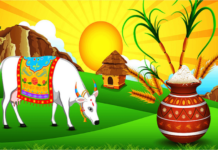Food production and distribution are intricately linked to geographic factors, shaping agricultural practices, access to resources, and the availability of food across the world. From the fertile plains of the Midwest to the challenging terrains of the Himalayas, geography plays a pivotal role in determining what food is grown, where it is grown, and how it reaches consumers. This essay explores the multifaceted relationship between geography and food production and distribution, delving into how various geographical factors influence these crucial aspects of human sustenance.
Geographic Factors and Agricultural Productivity:The geography of a region significantly impacts its agricultural productivity. Factors such as climate, soil type, and topography determine the suitability of land for cultivation. For instance, the temperate climate and fertile soils of the American Midwest have made it a breadbasket region, producing vast quantities of corn, soybeans, and wheat. In contrast, regions with arid climates like the Sahel face challenges in agriculture due to water scarcity and desertification.
Climate plays a pivotal role in determining crop patterns and growing seasons. Tropical regions with consistent sunlight and ample rainfall are ideal for cultivating crops like rice, sugarcane, and tropical fruits. Conversely, temperate regions experience distinct seasons, necessitating the cultivation of crops suited to specific weather conditions. The Mediterranean climate, characterized by hot, dry summers and mild winters, favours the cultivation of olive trees, grapes, and citrus fruits. Furthermore, humidity also affects farm production by influencing the growth and spread of pests and diseases. High level humidity can accelerate the growth of pests and diseases, while low humidity levels can lead to water dearth in crops.
Topography also influences agricultural practices. Mountainous regions often have limited arable land, leading to terraced farming practices to maximize space and prevent soil erosion. In areas prone to flooding, such as river deltas, farmers adapt by cultivating flood-resistant crops like rice and building levees and irrigation systems to manage water flow.
Access to Water Resources: Water availability is a critical determinant of agricultural productivity. Regions with abundant freshwater sources, such as river basins and lakes, have a comparative advantage in agriculture. Irrigation systems, both traditional and modern, are essential for sustaining agriculture in arid and semi-arid regions. Countries like Egypt and India have historically relied on irrigation from the Nile and Ganges rivers, respectively, to support intensive agricultural production. However, water scarcity poses a significant challenge to food production in many parts of the world. Competition for limited water resources between agricultural, industrial, and domestic sectors often leads to conflicts and exacerbates food insecurity. Climate change further exacerbates water stress, altering precipitation patterns and increasing the frequency of droughts and floods, disrupting agricultural systems and threatening food security.
Soil Quality and Land Use: The quality and fertility of soil influence crop yields and determine the types of crops that can be grown in a particular region. Factors such as soil pH, nutrient content, and texture affect plant growth and productivity. Fertile soils rich in organic matter are conducive to agriculture and support diverse crop rotations, while degraded soils require intensive management practices such as fertilization and soil conservation to maintain productivity. However, soil degradation, caused by deforestation, overgrazing, and intensive agricultural practices, poses a significant threat to food production worldwide. Soil erosion, nutrient depletion, and desertification can render land unsuitable for cultivation, leading to reduced yields and food insecurity. Sustainable soil management practices such as agroforestry, and organic farming are essential for preserving soil health and ensuring long-term food security.
Land use patterns are also shaped by geographic factors. Urbanization, industrialization, and deforestation encroach upon agricultural land, reducing the availability of arable land for food production. In densely populated regions like Southeast Asia, agricultural intensification and land consolidation are common strategies to maximize productivity and meet the growing demand for food.
Transportation and Infrastructure: Geographic factors influence the efficiency of food distribution networks and transportation infrastructure. Proximity to transportation hubs such as ports, railroads, and highways facilitates the movement of agricultural commodities from production areas to markets. Inland regions with limited access to transportation infrastructure may face higher transportation costs and longer transit times, affecting the availability and affordability of food.
Geography also shapes the availability of perishable goods and the viability of food preservation techniques. Coastal regions benefit from access to seafood and marine resources, while landlocked regions rely on alternative protein sources such as livestock and grains. Cold storage facilities and refrigerated transportation are essential for preserving perishable goods during transit, enabling the global trade of fruits, vegetables, and dairy products. Improvements in transportation infrastructure are crucial for reducing transportation costs and improving market access for farmers. In regions with rugged terrain or remote islands, air transportation may be necessary to transport perishable goods such as fruits and vegetables to distant markets. However, reliance on air transport can be costly and environmentally unsustainable, highlighting the need for investment in alternative modes of transportation and regional food systems.
Conclusion: Geographic factors exert a profound influence on food production and distribution worldwide, shaping agricultural practices, resource allocation, and access to food. Understanding these complex interactions is crucial for addressing the challenges of food security, environmental sustainability, and economic development. By leveraging geographic advantages, implementing sustainable practices, and investing in resilient infrastructure, societies can build more equitable and resilient food systems to feed a growing population in a changing world.
By: Kevin Shah
Write and Win: Participate in Creative writing Contest & International Essay Contest and win fabulous prizes.

















